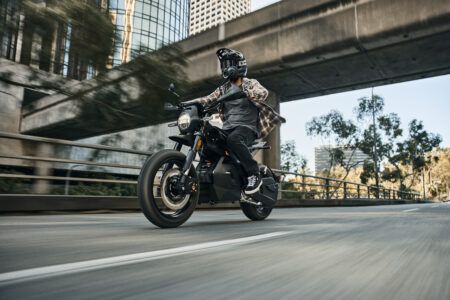The US Army has declared a mission to mitigate and adapt to climate change by becoming a more efficient force. To do this it announced the Army Climate Strategy (ACS) in 2022, which states carbon-cutting initiatives to achieve 50% reduction in Army net GHG pollution by 2030 (compared to 2005 levels) and attain net-zero Army GHG emissions by 2050. This includes the objectives of fielding an all-electric light-duty non-tactical vehicle (NTV) fleet (classed as passenger cars, minivans, passenger vans, and pickup trucks and sport-utility vehicles under 8,500lbs (3,855kg)) by 2027, and then the more ambitious target of rolling out an all-electric NTV fleet by 2035.
Despite best intentions, progress on fleet electrification has stalled due to the dilemma of how the military can solve the challenge of charging hybrid and battery electric vehicles. Operating in remote, off-grid, difficult-to-access locations where there is no electrical grid, let alone charge points, means supporting the shift to fleet electrification isn’t viable without the associated charging infrastructure.
With the growing demand for energy on the battlefield comes the greater need to mobilize it. To help fuel a future electrified military, UK company Solus Power has devised a pioneering portable power solution called Kratos, best described as ‘Jerry Cans of electricity’. The modular Lithium-ion battery packs are advanced DC-to-DC units that offer off-grid tactical energy storage and EV charging without the need for fixed infrastructure.
Established in 2020, Solus Power founder and CEO, Stas Leonidou, reveals the origin for its Kratos technology comes from a very different, yet just as crucial sector.
“It was initially intended for the automotive market,” he says. “Living in London, I decided to buy an electric car but there were no charge points on my road; the ones I could find in the city were either occupied, broken, or had just 7kWh of power, which would have taken me all day to charge.
“To eliminate the pain points of EV ownership, our concept was a service that could deploy a battery underneath a vehicle or stacked up next to it. Using a subscription-based service, we would be able to deploy on-demand charging to customers wherever they were parked.”

Military manoeuvres
While developing its consumer EV charging service, Leonidou explains how an encounter with defense and security company, QinetiQ, quickly recognized how the battery innovation could also have huge potential for military application, serving a supporting role for vehicle electrification.
“The reality of using heavy vehicles is that diesel needs to be moved everywhere and diesel run generators have to be transported to power equipment,” he says. “That requires a lot of money, physical space to store, and isn’t clean or particularly safe. If you can harvest energy where this is no grid, then deploy it on the battlefield it gives defense operational advantage.”
Solus Power and QinetiQ spent over two years developing the technology. Built for extreme environments, the Lithium-ion cylindrical cell packs are ruggedized to IP67 and reinforced with steel ribs to withstand the weight of 1,543lbs (700kg). Crucially, at 50lbs (23kg) they are light enough and small enough (55 x 45 x 11cm) to be manually carried for rapid deployment. Due to the nature of its application, the power capacity of each Kratos pack is currently classified, through its modular capability, users can scale the amount of energy to their requirements.
The packs connect in series using a High-Voltage three-pin flying lead cable delivering an ultrafast charge to the vehicle through a DC EV charging cable. The units can also act as efficient energy storage units capable of powering equipment, drones, and base operations instead of diesel generators.
The decision to create smaller, modular power units was made early in the development process.
“We used sandbags to replicate the batteries and physically modeled how the system would work,” says Leonidou. “There was a big debate over using one large battery or going modular. The reason why we choose the modular setup was due to many factors such as the camber of the road or the way people park.
“We took clearance measurements of every EV on the market to ensure the battery packs would fit under them. After exploring different methods to deploy Kratos, including using robotic technology, we soon realized they should be handled manually for speed, so the packs had to be light and maneuverable.”
Solus Power is continuing to develop the technology alongside QinetiQ with the aim to bring it to market as soon as possible. Leonidou describes how recent investment has meant they are able to expedite the development process.
“The latest funding is not only testament to the belief in the impact of our revolutionary technology, but it will enable us to accelerate its commercialisation. We will look to conduct, evaluate and conclude testing at QinetiQ’s Vehicle Systems Facility in Farnborough. Following that, we will unveil a fully functioning demonstrator,” he says. “Our aim is to have Kratos on the market by 2024 in the United Kingdom and further territories afterwards.”

Green force
The battlefield is becoming increasingly energy hungry as both the UK and US Army have announced strategies to move to more sustainable, electrified vehicle fleets.
As per the UK Army’s approach to battlefield electrification, in 1945 one liter (0.2 gallons) of fuel was needed per soldier per day; today it is 20 (4 gallons), increasing resupply convoys and exposing troops to greater risk. One liter of fuel provided to a Forward Operating Base requires another seven to get it there.
Meanwhile, the US Army has made efforts to remove over 18,000 fossil fuel NTVs from its fleet while increasing its inventory of hybrid vehicles by almost 3,000.
These changes have already decreased NTV fleet costs by over US$50 million, cut Army fossil fuel consumption by more than 13 million gallons (49 million liters) per year, and reduced the service’s GHG emissions per mile by over 12%.





